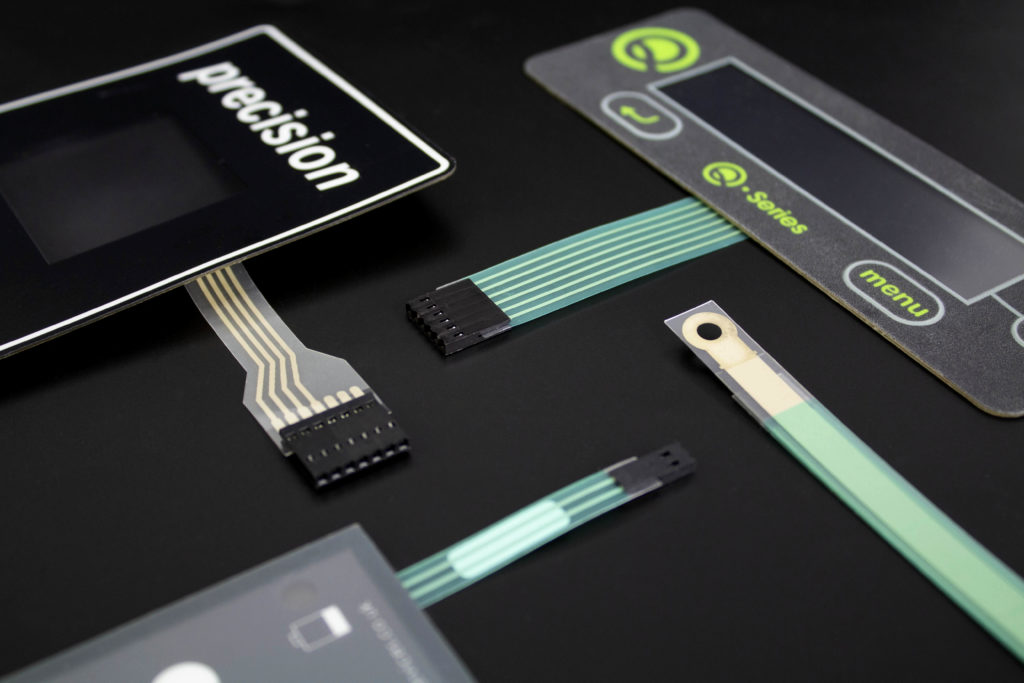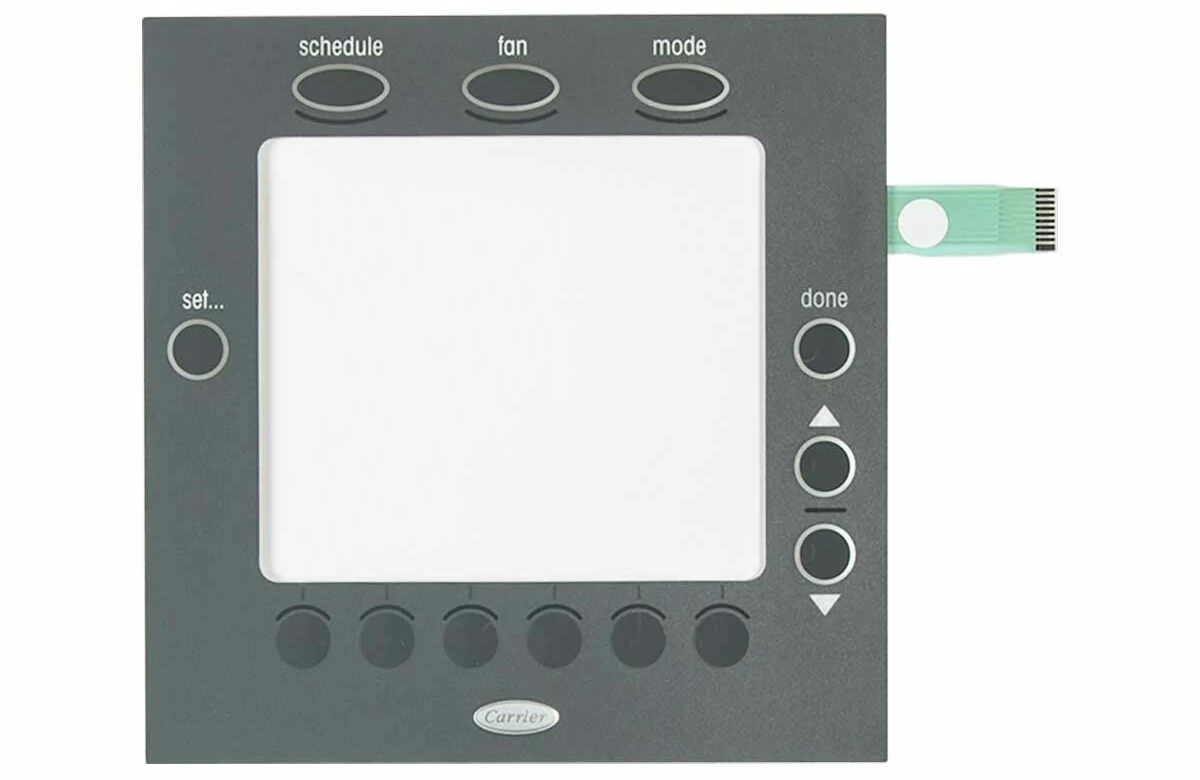Understanding the Relevance of Membrane Switches in User User Interfaces
Membrane buttons are integral elements in the style of effective customer interfaces, facilitating not just functionality however also improving visual appeal and customer interaction. As we discover the various advantages and future fads linked with Membrane innovation, it comes to be clear that these switches are much more than just elements; they stand for a merging of development and usefulness.
What Are Membrane Switches?
The spacer layer, which consists of glue buildings, enables the separation of the circuit layer from the overlay, making sure that the button remains in a non-activated state up until pressed. When stress is put on the overlay, it compresses the spacer layer, bridging the void and completing the circuit in the underlying layer. This design not just lowers the physical room needed for typical mechanical buttons yet additionally enhances the longevity of the tool, as Membrane switches are generally immune to dust, wetness, and other ecological variables.
Frequently discovered in applications ranging from consumer electronic devices to medical tools, Membrane switches are essential to modern technology, offering a user-friendly and efficient user interface that aligns with modern design needs.
Advantages of Membrane Switches
While countless switch technologies exist, Membrane Switches offer distinctive advantages that make them especially preferable in various applications. One of the key benefits of Membrane buttons is their small layout, which permits space-saving executions in gadgets where genuine estate is restricted. Their slim account not just enhances visual allure but likewise facilitates lightweight building and construction.
One more considerable advantage is their resistance to environmental aspects. Membrane switches are commonly sealed against wetness, dust, and impurities, making them optimal for usage in demanding atmospheres, such as clinical tools and commercial tools. This resilience extends the lifespan of the switch, decreasing upkeep prices and enhancing reliability.
Furthermore, Membrane switches can be personalized to fulfill particular style needs, including one-of-a-kind graphics and shades that boost individual communication. Their responsive comments choices can also be tailored to give an enjoyable customer experience. Furthermore, Membrane buttons are economical, particularly in high-volume applications, as they can be created effectively.
Applications in Numerous Industries

In the consumer electronics field, Membrane switches are common in tools such as microwaves, cleaning devices, and remote controls. Their tactile comments and visual alternatives improve individual experience while offering a smooth, contemporary appearance. Additionally, vehicle suppliers make use of Membrane switches in control panel controls and infotainment systems, where room is limited, and user involvement is crucial.
In addition, the commercial sector leverages Membrane buttons in control panels for equipment and equipment, permitting intuitive operation in often harsh settings. Their resistance to chemicals and moisture makes certain longevity and integrity in these applications. In general, the versatility of Membrane Switches contributes significantly to their widespread usage, making them essential in numerous technological domain names.
Design Considerations for Membrane Switches

When developing Membrane buttons, several essential considerations need to be thought about to make certain optimum functionality and customer experience. The choice of products is critical; selecting resilient, premium substratums can improve the switch's longevity and resistance to ecological factors such as wetness and temperature fluctuations.
Secondly, the design of find the graphic overlay should focus on quality and simplicity of use. Symbols and text should be legible, and the format should promote instinctive communication (membrane switches). Additionally, responsive comments is necessary; integrating a responsive dome or various other mechanisms can boost the customer experience by providing physical verification of activation
One more vital factor is the button's electrical efficiency. Developers should ensure that the conductive traces are properly developed to minimize resistance and avoid signal disturbance. This entails evaluating the needed actuation force and guaranteeing compatibility with the electronic components they will user interface with.

Future Fads in Membrane Innovation
As technology remains to advancement, Membrane buttons are poised to progress considerably, driven by technologies in materials and producing techniques. One emerging pattern is the unification of innovative products, such as adaptable substratums and conductive inks, which enhance toughness and lower the overall weight of Membrane switches. These materials not only enhance the tactile reaction but likewise enable for the layout of buttons that can withstand harsher ecological problems.
Moreover, the integration of touch-sensitive modern technologies is changing traditional Membrane Switches into more interactive interface. Capacitive touch sensing units embedded within Membrane switch panels can provide an extra user-friendly and receptive individual experience, aligning with the expanding need for smooth, contemporary designs in consumer electronic devices.
In addition, developments in printing methods, such as electronic and 3D printing, make it possible for quick prototyping and personalization of Membrane switches. This versatility permits manufacturers to respond faster to market needs and customer choices.
Last but not least, sustainability is coming to be a try this website substantial emphasis, with suppliers checking out eco-friendly products and processes. As these trends unfold, the future of Membrane modern technology promises boosted capability, visual allure, and ecological obligation, solidifying their role in advanced individual interfaces across different markets.
Verdict
In verdict, Membrane Switches stand for an essential element in the layout of user interfaces, integrating performance with read here visual versatility. As advancements in innovation continue, the development of Membrane switches is expected to further refine individual interfaces, driving innovation and boosting functionality in an increasingly complicated technological landscape.
Membrane buttons are integral elements in the layout of effective individual interfaces, helping with not only capability yet likewise boosting aesthetic charm and customer communication.Membrane Switches serve as an essential component in different individual interfaces, facilitating a seamless interaction in between customers and digital devices.While numerous switch modern technologies exist, Membrane Switches offer unique benefits that make them specifically preferable in various applications.In addition, Membrane switches can be tailored to fulfill details design needs, integrating unique graphics and colors that enhance user communication.In conclusion, Membrane Switches stand for a vital element in the style of customer interfaces, combining functionality with aesthetic flexibility.
Comments on “How Membrane Switches Are Used in Medical Devices and Equipment”